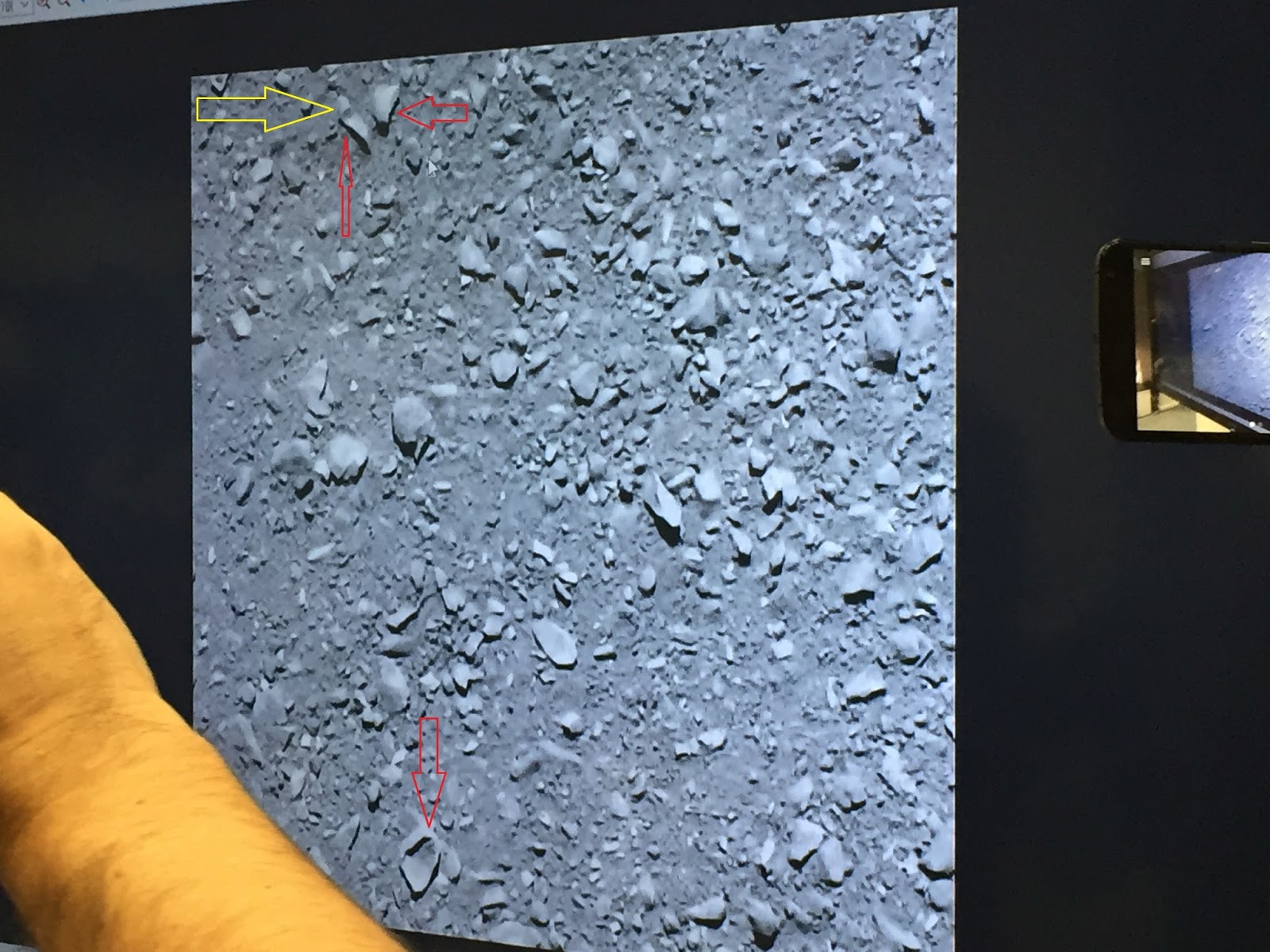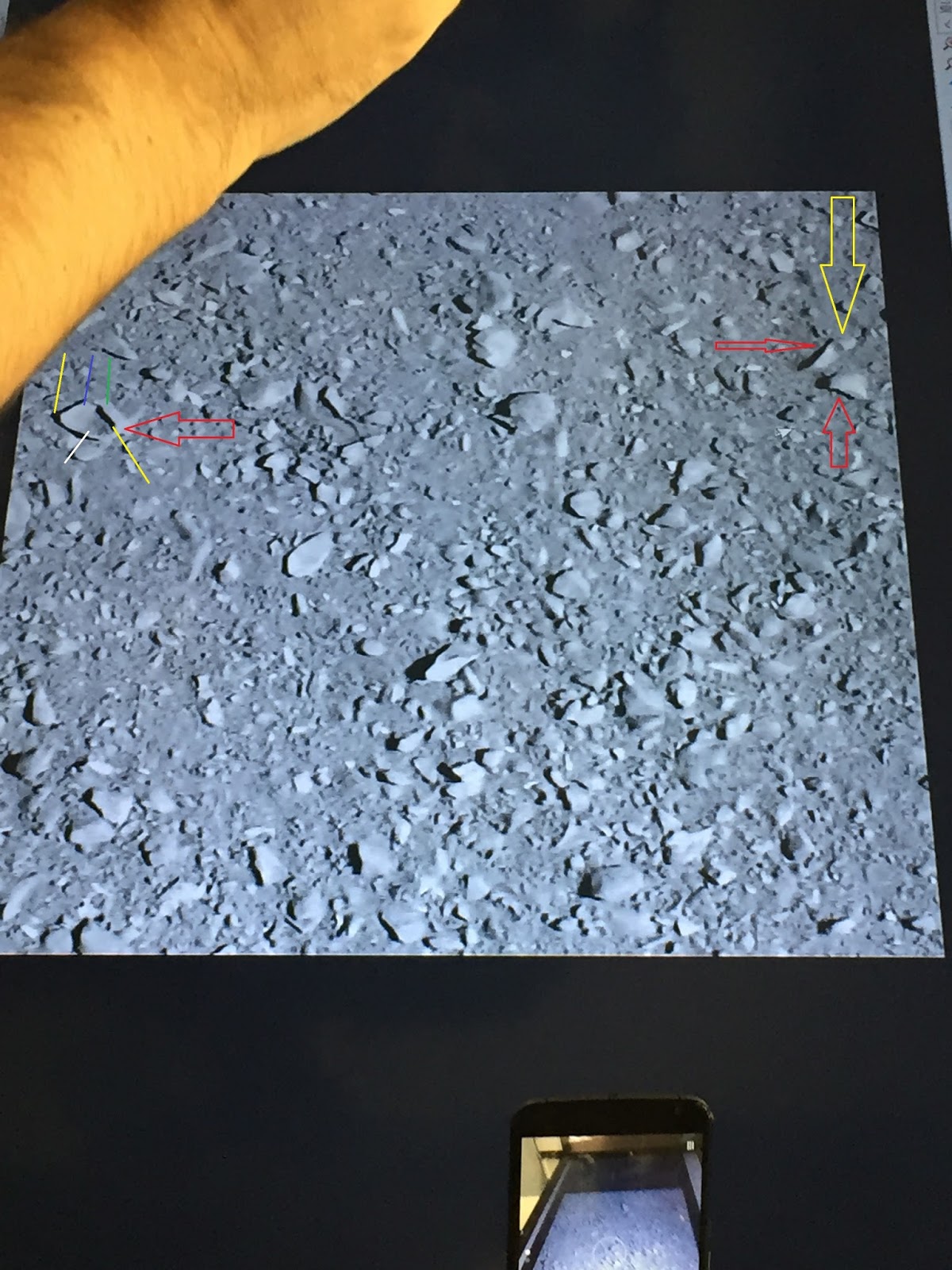

| Online: | |
| Visits: | |
| Stories: |

| Story Views | |
| Now: | |
| Last Hour: | |
| Last 24 Hours: | |
| Total: | |
Martian Landscape and Artifact Found on Comet 67P
Saturday, October 1, 2016 2:15
% of readers think this story is Fact. Add your two cents.
Last updated on Oct. 3, 2016
At bottom left is a red arrow pointing to an artifact found on Comet 67P. The photo was taken minutes before Rosetta spacecraft crashed onto Comet 67P on Sept. 30, 2016. Image credit: ESA/Emily elakdawallaImage source: the first image in
planetary.s3.amazonaws.com/emily/Rosetta.rar
Added on Oct. 2, 2016: Martian Landscape and Broken Container Found on Comet
The first figure above was turned 90 degrees into this figure. At upper left is a red arrow pointing to a broken container found on Comet 67P. Two yellow lines mark black shadows from the container. Green line and white line mark the top and bottom of the broken container. Blue line marks the raised part of the broken container.
Original-sized figure: www.flickr.com/photos/fossil_lin/30009193046/sizes/o/
Added on Oct. 3: Ten Artifacts Found on Comet 67P:
http://wretchfossil.blogspot.tw/2015/08/four-artifacts-found-on-comet-67p.html?q=artifact+on+comet+67P (first posted on Aug. 13, 2015)
Added on Oct. 3: Correction to the above—Not a Container, but Two Curly Artifacts Contacting Each Other.
I reviewed the first photo in its original size and found the red arrow actually points to two curly artifacts that contact each other. Although it is not a broken container, they are still artifacts. Some people may think they are rocks. They are not natural rocks, for the following reasons:
1. Most astronomers think comets were condensed from cosmic clouds over 4.56 billion years ago and remained pristine ever since, except for solar radiation, etc.
1. Most astronomers think comets were condensed from cosmic clouds over 4.56 billion years ago and remained pristine ever since, except for solar radiation, etc.
2. The comet has no magnetism/volcano/river/lake. So the comet could not form igneous or sedimentary rocks.
3. The comet has no cement, pressure and magnetism to mold settling dusts into flat and curly objects.
Therefore, the curly objects should be artifacts, not rocks, that originated from Mars, as Comet 67P itself originated from Mars (see https://www.flickr.com/photos/fossil_lin/19529916530/in/dateposted-public/ ).
Therefore, the curly objects should be artifacts, not rocks, that originated from Mars, as Comet 67P itself originated from Mars (see https://www.flickr.com/photos/fossil_lin/19529916530/in/dateposted-public/ ).




